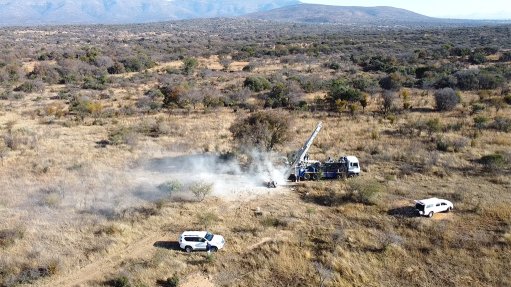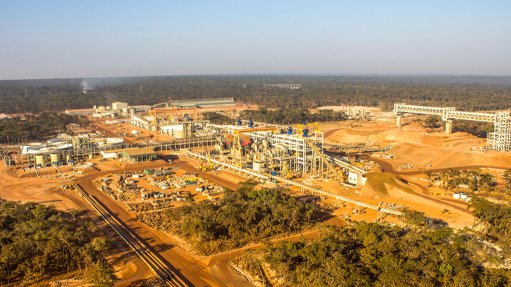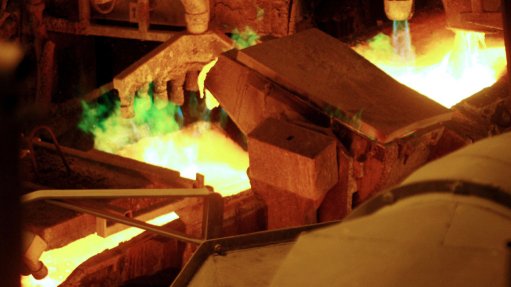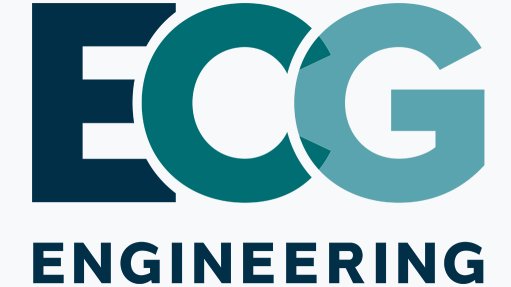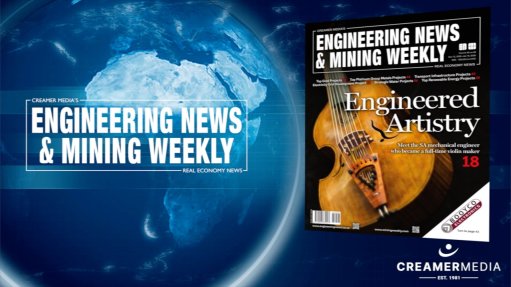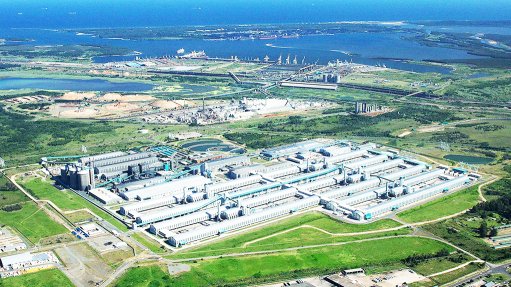Zim expertise shines in tailings dam construction

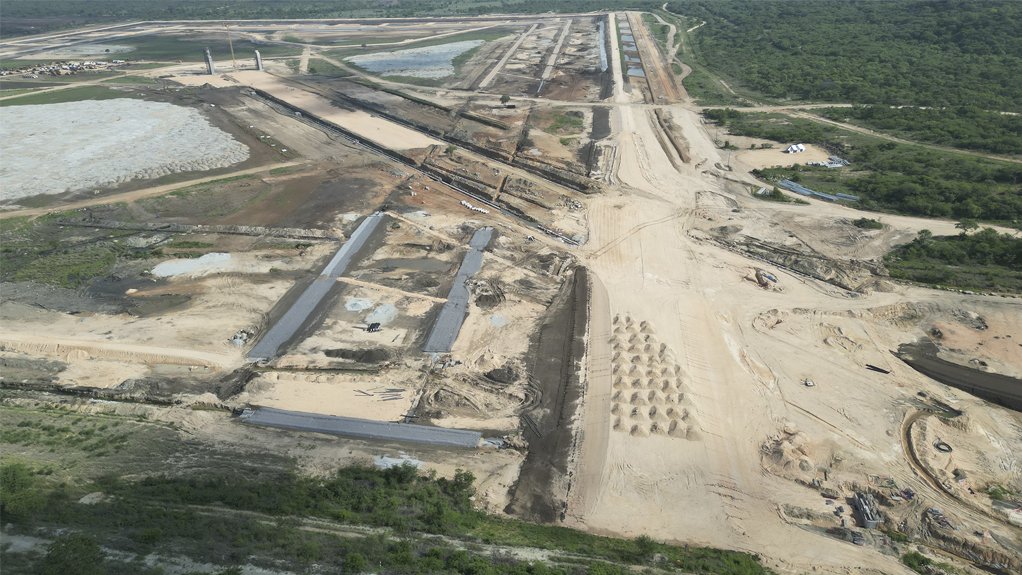
TAILINGS CONSTRUCTION The TSF-4, looking north from TSF-3 and showing the main drain one and two being intercepted by the two penstock pipelines running southeast from penstock towers
The construction of a large tailings storage facility (TSF) for a platinum group metals miner in Zimbabwe demonstrated the capability of local firms, working in close collaboration with SRK Consulting South Africa (SA), reports SRK principal civil engineer Andrew Robertshaw.
The TSF-4 project is the second largest TSF in Zimbabwe and saw the appointment of South Africa-based SRK Consulting SA to conduct the detailed design of the TSF, which was completed in May 2022.
Proceeding this, SRK was contracted to provide on-site construction quality assurance of the civils works and the electrical infrastructure and instrumentation to operate the facility – a contract fulfilled over two years to March 2024.
“This was a sizeable project that has resulted in a modern TSF structure measuring 1 km by 1.3 km,” says Robertshaw, adding that the storage capacity of the facility is substantial, based on a production rate of 466 000 t a month over a 20-year deposition period.
He adds that the detailed design project involved over ten SRK professionals, supported by an experienced engineering geologist who was on site during the design phase to conduct the necessary material testing.
“During the construction phase of the TSF, we deployed one of our most senior construction managers to the site, and retained our experienced engineering geologist, to work closely with the local contractor on aspects of quality management and scheduling.
“To further strengthen our support for the contractor, we also placed one of our experienced project schedulers on the contract,” says Robertshaw.
SRK’s civil engineers were “central” to TSF-4 development activities, which included the drains, pump stations, earthworks and concrete infrastructure, he adds. Paterson & Cooke Consulting Engineers were engaged for the mechanical and electrical design, mainly related to pumping technology.
However, key to the client’s strategy was the involvement and empowerment of local companies, with the main players in the construction and related duties being Harare-based Forit Contracting and local laboratory services company Kumba Resources Zimbabwe.
“Our quality assurance plan considered all our construction specifications and documented how we would meet each requirement. To maintain this level of quality, we facilitated an independent on-site laboratory using local technicians to test material daily and deliver accurate results quickly [on] various materials such as concrete, aggregate and sand,” says Robertshaw.
Leading the team, Robertshaw would spend a week a month on site, while the construction manager and quality assurance team was full time on site. The team was augmented on an ad hoc basis with non-site based engineering colleagues, as required.
SRK’s hands-on approach was “vital” to the project success, given the magnitude of the contractor’s remit, which included clearing and levelling the vast area, as well as excavation of drains.
“We were able to help guide the client and contractor on the earthmoving equipment required, for instance, to meet the project roll-out deadlines. These decisions also had to consider the impact of the rainy season, to ensure that work could continue despite weather-related disruptions,” elaborates Robertshaw.
Problematic Material
Designed and built to comply with the Global Industry Standard on Tailings Management (GISTM), the TSF-4 also had to deal with specific local conditions such as a high level of talc in the tailings.
This material stays in suspension for lengthy periods, requiring a longer time to settle – a factor which SRK corporate consultant Robert McNeill explains requires a “complex and cutting-edge” drainage system design to deal with the challenge of the talc content.
Further challenges arise when the material does settle, as the fine material can cover and block the drains under the TSF, he explains, adding that this could lead to water forcing its way out of the dam through other routes, such as under its foundations or through its walls.
Meeting the needs of this design challenge, McNeill says it was important to account for removal of the water in the tailings as quickly as possible, using a robust drainage system through the dam foundations at ground level.
An in-line pump station pumps the water around the eastern side of the structure and into a silt-trap dam where remaining suspended solids have more residence time to settle before the water continues to the return water dam.
Internal paddocks were designed to run alongside the inside walls of the TSF to provide smaller areas for deposition, allowing the settlement of the coarser fraction of tailings and the creation of a well-drained outer shell.
The paddocks fill quickly with coarse tailings, while the finer tailings and talc, with a longer settlement time, flow over the inner paddock walls into the main basin, where the finer tailings and talc settle, thereby reducing the opportunity for talc to settle over and clog the main drain.
“A great deal of work went into understanding the seepage on this facility, and how we decant water from the structure,” he says, adding that future-proofing elements were included in the design, which would, at little extra cost, extend the operational life of the facility.
McNeill points out that, as part of the application of best practice, the TSF was not only clay-lined but there was also extensive use of high-density polyethylene lining in the drains – a “unique approach [in] response to both the geochemistry and the very flat gradients at the site”.
With the TSF-4 serving an in-production mine, Robertshaw says it was necessary to roll out the project in a way that allowed the mine to discharge some of its tailings to the TSF as soon as possible. SRK worked with the client to ensure that the mine could shift some of its discharge from its existing TSF-3, to ensure streamlined production from the plant.
Article Enquiry
Email Article
Save Article
Feedback
To advertise email advertising@creamermedia.co.za or click here
Press Office
Announcements
What's On
Subscribe to improve your user experience...
Option 1 (equivalent of R125 a month):
Receive a weekly copy of Creamer Media's Engineering News & Mining Weekly magazine
(print copy for those in South Africa and e-magazine for those outside of South Africa)
Receive daily email newsletters
Access to full search results
Access archive of magazine back copies
Access to Projects in Progress
Access to ONE Research Report of your choice in PDF format
Option 2 (equivalent of R375 a month):
All benefits from Option 1
PLUS
Access to Creamer Media's Research Channel Africa for ALL Research Reports, in PDF format, on various industrial and mining sectors
including Electricity; Water; Energy Transition; Hydrogen; Roads, Rail and Ports; Coal; Gold; Platinum; Battery Metals; etc.
Already a subscriber?
Forgotten your password?
Receive weekly copy of Creamer Media's Engineering News & Mining Weekly magazine (print copy for those in South Africa and e-magazine for those outside of South Africa)
➕
Recieve daily email newsletters
➕
Access to full search results
➕
Access archive of magazine back copies
➕
Access to Projects in Progress
➕
Access to ONE Research Report of your choice in PDF format
RESEARCH CHANNEL AFRICA
R4500 (equivalent of R375 a month)
SUBSCRIBEAll benefits from Option 1
➕
Access to Creamer Media's Research Channel Africa for ALL Research Reports on various industrial and mining sectors, in PDF format, including on:
Electricity
➕
Water
➕
Energy Transition
➕
Hydrogen
➕
Roads, Rail and Ports
➕
Coal
➕
Gold
➕
Platinum
➕
Battery Metals
➕
etc.
Receive all benefits from Option 1 or Option 2 delivered to numerous people at your company
➕
Multiple User names and Passwords for simultaneous log-ins
➕
Intranet integration access to all in your organisation








